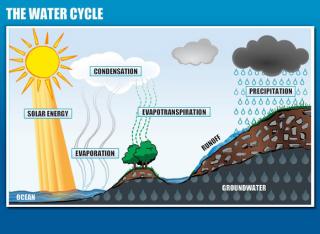Stormwater Resources & Permitting Center

What is Stormwater and Why does it matter?
Stormwater is the water that flows over the ground when it rains or snows. Some of it seeps into the ground or evaporates, but much of it runs off over the land or through storm drains and then flows into our streams and ponds. Stormwater picks up litter, sand, bacteria, oil and other chemicals as it flows over the land, and it carries these pollutants to our streams, ponds, and wetlands, usually without any treatment or cleansing. Runoff from paved surfaces, such as roads, parking lots, and driveways, may contribute large amounts of polluted stormwater.
What are Best Management Practices (BMP's)?
Best Management Practice (BMP) is broadly used to describe the most effective, feasible method that does the job. In the context of storm water management, it is often used to mean a structure or technology used to manage or treat the water such as a hooded catch basin, detention basin, or a filter system. The term BMP is also used for behavioral practices such as timely cleaning of catch basins, or habitual closing of the lid on a dumpster (avoiding dumpster brew when it rains). A BMP can even be restraint of a specific behavior such as minimizing the use of lawn fertilizer, or of road salt and sand.
What is MS4?
MS4 stands for "municipal separate storm sewer system." It is a drainage system owned by a municipality intended to carry only surface runoff (i.e. stormwater). A separate sewer is not intended to, nor should it, carry storm water combined with sanitary sewage or with any other pollutant.

